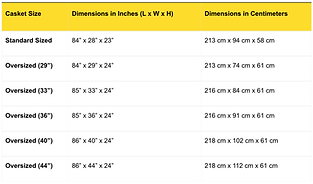
Planning a funeral can be an emotionally challenging time, and navigating the various details can feel overwhelming. One often overlooked aspect is understanding the weight of a casket. Knowing the average weight of a coffin or how heavy is a casket can be crucial for several reasons, particularly when considering pallbearers’ capabilities and logistical arrangements for transportation. This article will delve into the factors influencing casket weight, providing you with a comprehensive guide to help make informed decisions during this sensitive time.
This article will explore the typical average weight of a casket, examining the various factors that contribute to its overall weight. We’ll discuss different materials used in casket construction and how they impact weight, delve into the role of lining, and ultimately provide insights into the total weight of a casket with a body inside.
Average Casket Weight
The average weight of a casket typically falls between 150 and 300 pounds. This range can fluctuate depending on several factors, including the chosen material, size, and any additional features incorporated into the design. Understanding this general weight range is essential for planning transportation logistics and ensuring pallbearers are adequately prepared for their role.
When considering how heavy is a casket, it’s important to remember that individual caskets can vary significantly in weight. Some lightweight materials like fiberglass may result in a casket weighing closer to 150 pounds, while heavier materials like solid bronze could exceed 300 pounds.
Factors Affecting Casket Weight
Several factors contribute to the overall weight of a casket. Understanding these influences can help you make more informed decisions when selecting a casket that meets your needs and preferences.
Material Selection
The material used in constructing a casket has a direct impact on its weight.
- Wood: Traditional wooden caskets are often made from hardwoods like oak, mahogany, or cherry. These woods are dense and contribute to a heavier casket.
- Metal: Metal caskets, typically made from steel or bronze, tend to be significantly heavier than wood caskets due to the density of these metals.
- Fiberglass: Fiberglass caskets offer a lightweight alternative, often weighing less than traditional wood or metal options.
Size and Dimensions
The size of a casket directly influences its weight. Larger caskets designed for adults will naturally weigh more than smaller caskets intended for children.
Additional Features
Certain features incorporated into a casket design can add to its overall weight.
- Lining: The type and thickness of the lining used inside a casket can affect its weight. Velvet or satin linings tend to be heavier than simpler materials like crepe.
- Hardware: The type and quantity of hardware, such as handles, hinges, and decorative accents, can contribute to the overall weight of a casket.
Casket Lining and Weight
The lining plays a significant role in both the aesthetic appeal and the weight of a casket.
Different lining materials have varying weights. Velvet or satin linings are often chosen for their luxurious feel but tend to be heavier than simpler crepe or silk linings. The thickness of the lining also contributes to its overall weight. A thicker lining will naturally weigh more than a thinner one.
Total Weight with Body
When considering how heavy is a casket for a pallbearer, it’s crucial to factor in the weight of the deceased individual. A typical adult body weighs approximately 150-200 pounds, adding significantly to the overall weight of the casket.
Therefore, the total weight of a casket with a body inside typically ranges from 350 to 700 pounds. This range can vary depending on the factors discussed previously, such as the average weight of a casket and the individual’s weight.
Conclusion
Understanding the average weight of a coffin, the factors influencing casket weight, and the total weight with a body inside is essential for making informed decisions during funeral arrangements. By considering material, size, lining, and the deceased’s weight, you can ensure that pallbearers are adequately prepared and transportation logistics are effectively planned. Remember, this information empowers you to navigate this sensitive process with greater clarity and confidence.
